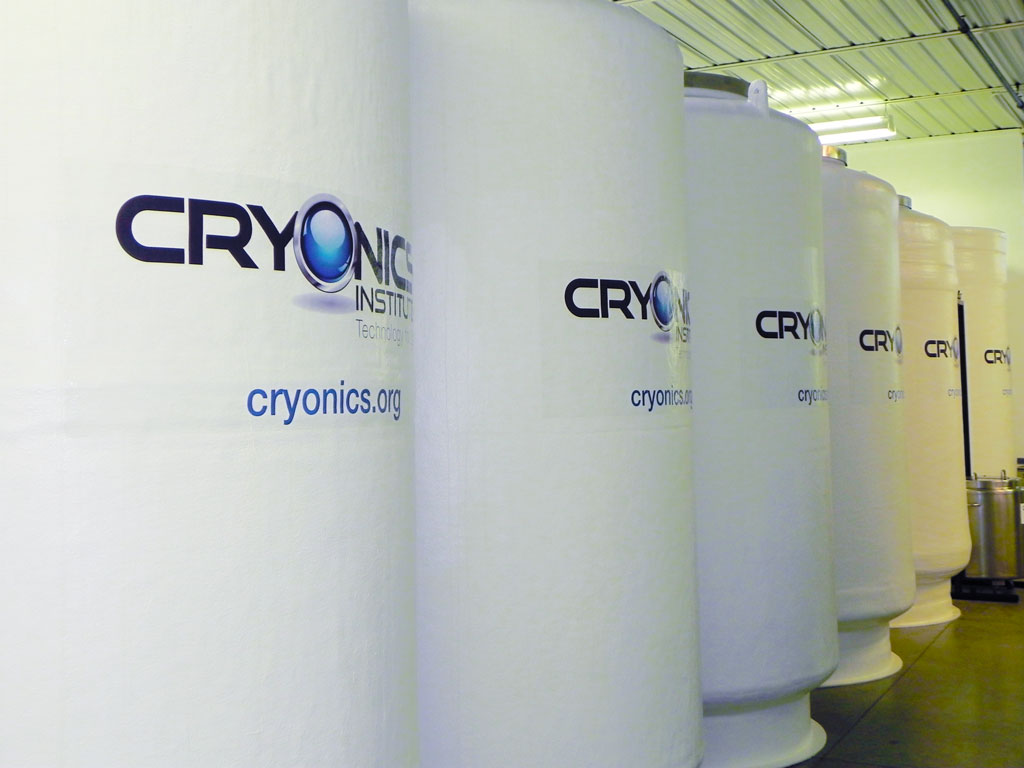Table of Contents (click to expand)
Cryonics is the practice of freezing the body at subzero temperatures, with the hope that future technology will be able to bring it back to life. Many companies have begun offering this service, but there is little to no evidence that cryo-preserved bodies can be revived.
Who doesn’t want to live as long as they can? If given the chance, some people would want to live forever!
Humans put a lot of effort into extending our individual stays on this planet. Eating greens, running, intermittent fasting, juice cleansing, turning into a teetotaler… the list goes on and on. Unless you live in one of the five blue zones on Earth, where people tend to live the longest, hitting the century mark in life seems to be one hell of a challenging task. No matter how careful you are, disease will eventually come knocking at the door.
However, what if there’s a way to cheat nature? What is there was a path to immortality?
For those terrified of aging and death, cryonics might be the answer. Cryonics claims to be the key to immortality. It can help you resume your life after rising from the dead, but not in the way vampires do.
So what is the science behind cryonics? Is it a sham or a scientific breakthrough?
What Is Cryonics?
Imagine that you’re dying due to a disease with no cure. Doctors are working to find a cure, but you just don’t have enough time before it ends your life. What if you could pause the process of dying until medical research caught up with your disease and a cure became available?
This is where cryonics appears as a ray of hope for your dying body. Cryonics is the practice of freezing the body at subzero temperatures, in the hopes that future technology can bring it back to life. It sounds like a good concept for a sci-fi movie, doesn’t it? That’s because movies like Passenger and Vanilla Sky have played with this very appealing idea.
Given its experimental nature and the advanced equipment required for the process, it probably won’t come as a surprise that cryopreservation can cost a fortune. Then again, what’s the use of all that money if it can’t buy you a life?
Assuming that you have a lot of money that is required to extend your life after death, how exactly will your body be frozen?
Also Read: If You Die In Space, Does Your Body Decompose?
Preservation Of The Body
Once you’ve been declared legally dead, cryopreservation can begin.
To keep the brain tissues protected, blood circulation and breathing are temporarily restored by CPR and an oxygen mask until the specialized medications can be injected into the system. A medical team then cools the body by placing it in an ice water bath, and injecting anticoagulants to prevent the blood from clotting. Within 24 hours of death, the body is taken to the cryopreservation center where the body is safely preserved.

Vitrification
When you fill the ice tray with water and keep it in the freezer, you have probably observed that water expands upon freezing. This is because the water molecules form a hexagonal crystalline structure when frozen, which takes up more space than liquid water.
The average human body is made of 60% water. If not frozen correctly, the water present in our cells would turn into ice. Ice expands in volume and forms crystal lattices, putting pressure on cell walls and blood vessels, which can cause the cells and tissues to crack open. If the ultimate goal of cryonics is to restore your body to a healthy living condition at some time in the future, a body full of ruptured cells won’t be very helpful. This is where a process known as “Vitrification” comes to the rescue. Vitrification allows the body to be frozen in time.
Vitrification is the process of turning a substance into glass, a non-crystalline amorphous solid. The process is done by introducing anti-freeze chemicals known as cryoprotectants into the bloodstream. Glycerol and dimethyl sulfoxide (DMSO) are common cryoprotectants that are used before starting the freezing process.

Cryoprotectants prevent the formation of ice crystals by increasing intracellular solute concentration. This allows the water molecules to be locked in place without turning into ice crystals, even after being frozen below -100 ° C. No ice formation means no structural damage to the body’s cells. However, with the increase in the concentration of cryoprotectants in the body, the chances of toxicity also increase.
Deep Cooling The Human Body
Once your body has been safely vitrified, it will be lowered into a cryopreservation tank, i.e., your new icy home. For the foreseeable future, your body will be kept at a toasty -196°C with the help of liquid nitrogen. This will protect the body from any deterioration for potentially thousands of years… so to speak.

And then?
Wait and hope that science finds a way to bring you back.
Ethical Issues
The legitimacy of cryonics is one of the main ethical concerns for practitioners, opponents, and potential “people popsicles”. There is no proof or guarantee that the body can bounce back to health after being frozen for years. Who’s to say that resurrection after being cryogenically frozen is nothing less than a false hope? Freezing your body in the hopes of scientific advancement that will help resume life sounds a lot like science fiction.
Some argue that cryonics may also promote a trend of euthanasia, as people might prefer cryopreservation while their body remains untouched by disease and old age.
Let’s consider a scenario where we find a way to bring a person back to a healthy living condition. Will the cryopreserved person retain their original personality and identity? There’s no guarantee that cryopreservation won’t permanently alter brain function. Additionally, after waking up after thousands of years, people would find themselves alone, without any family or friends. The prospect of being alone can be frightening for some. Another main concern would be that such resurrected beings would further add to the population on Earth.
Also Read: Can The Brain Or Head Be Transplanted?
Will It Work?
A century ago, a trip to outer space was an unimaginable idea. Now, astronauts frequently fly to the International Space Station, so clearly, no one can truly know what the future holds. There is a possibility that coming back to life after being cryogenically frozen for years is the real deal. Or maybe cryonics is nothing but a fantastic notion.
However, there are a few possibilities that would make cryonically freezing someone a failure. If the body is damaged before or after cryopreservation, it will be impossible to revive the brain function of that person. The most disheartening possibility, of course, is that even in the future, science may never be able to fully revive a cryopreserved body.
How well do you understand the article above!

References (click to expand)
- Shanbhag, V. K. (2017). Assessment of ethical aspects of cryonics: An emerging technology. Journal of the Scientific Society. Medknow.
- A Rajendran —. Ethical Implications of Suspended Animation and Cryonics. The University of Southern California
- What is Cryonics? - Alcor - Life Extension Foundation. The Alcor Life Extension Foundation
- Best, B. P. (2008, April 28). Scientific Justification of Cryonics Practice. Rejuvenation Research. Mary Ann Liebert Inc.
- Jang, T. H., Park, S. C., Yang, J. H., Kim, J. Y., Seok, J. H., Park, U. S., … Han, J. (2017, March). Cryopreservation and its clinical applications. Integrative Medicine Research. Elsevier BV.
